Timothy C Visel, Retired Aquaculture Educator, United States
In 2001, the Food and Agriculture Organization (FAO) predicted that aquaculture-raised seafood would surpass fish-natural stock catches in 2030 (Aquaculture News, Vol. 9, No. 3, January, 2001). The aquaculture industry did not need to wait until then. Aquaculture seaf [....] » Read More





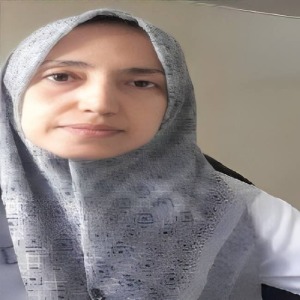

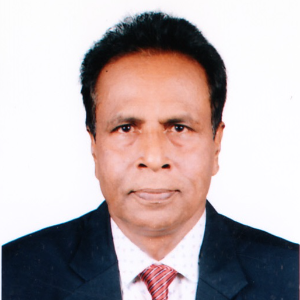














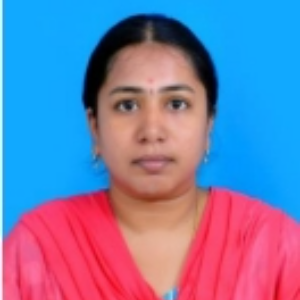








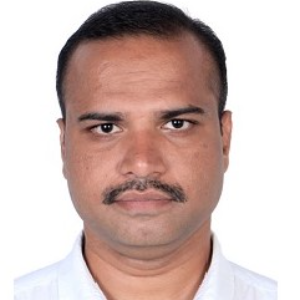



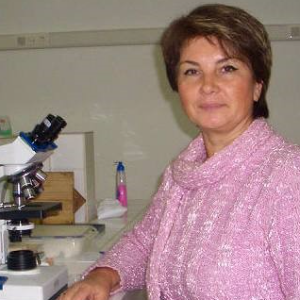















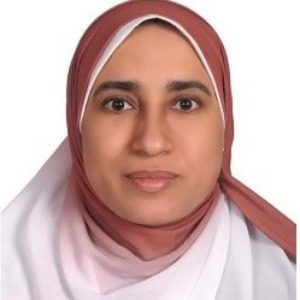

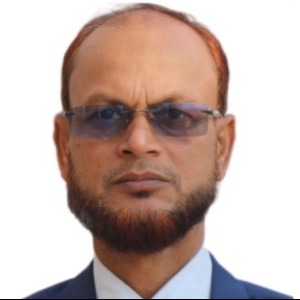




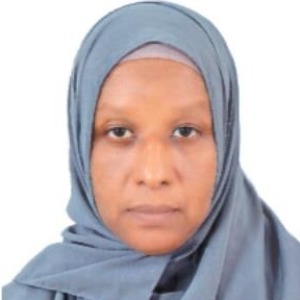






Title : The horizontal integration of a shellfish farm in a broader business model
Perry Raso, Matunuck Oyster Farm, United States
The demand for Eastern oysters over the last two decades has increased year after year. This steady continuous growth has created opportunity not only for oyster farmers and other businesses immediately supporting the shellfish aquaculture industry, such as gear and transportatio [....] » Read More
Title : Review of recent advances in replacing fish-based protein and oil with plant-based alternatives in aquafeeds
Amrit Bart, University of Georgia, United States
The growing demand for sustainable aquafeeds has accelerated research into replacing fishmeal and fish oil with plant-based alternatives. Traditionally sourced from wild fisheries, these marine-derived ingredients raise ecological and economic concerns. In response, plant-based i [....] » Read More
Title : India’s blue revolution at a crossroads: Lessons from the green revolution for a sustainable future
Mukesh Bhendarkar, ICAR-National Institute of Abiotic Stress Management, India
The Blue Revolution is reshaping India's fisheries and aquaculture sector, making the country the second-largest aquaculture producer globally, contributing over 8.0% to global fish production, and providing livelihoods for millions. Government-backed initiatives such as the [....] » Read More
Title : Impact of antibiotic application on microbiome present in catfish gut and water
Luxin Wang, University of California Davis, United States
Terramycin (oxytetracycline) is an FDA-approved antibiotic commonly used to treat enteric septicemia in catfish caused by Edwardsiella ictalurid. Despite its widespread use, its impact on the gut microbiota of catfish as well as the water mcirobiome remains poorly understood. Thi [....] » Read More
Title : Smart sensors and real-time monitoring: Revolutionizing aquatic pollution management
Vidya Padmakumar, EcoDiversity Lab, Canada
The increasing prevalence of aquatic pollution poses significant threats to ecosystems and human health, necessitating innovative management strategies. Smart sensors and real-time monitoring systems, integrated through the Internet of Things (IoT), have emerged as transformative [....] » Read More
Title : An Earth Observation (EO) service using AI for efficient monitoring, reporting and certification in the blue economy
Gopika Suresh, Marble Imaging AG, Germany
Our oceans are threatened and food security from ocean products through sustainable practices such as aquaculture is critical. Marble Imaging presents an Earth Observation (EO)-powered analytical solution that supports sustainable aquaculture certification by delivering crucial i [....] » Read More
Title : Growth performance and gut pH of juvenile shrimp fed with a lignosulfonic acid-based feed acidifier
Julia Dvorska, Borregaard, Germany
Pelleting is a crucial process in aquafeed production, significantly influencing both production efficiency and the quality of the final feed product. Enhancing pelleting efficiency can lead to substantial economic benefits and improved feed performance. This study, conducted on [....] » Read More
Title : Enhancing pelleting efficiency in aquafeed production: A comparative study
Julia Dvorska, Borregaard, Germany
Pelleting is a crucial process in aquafeed production, significantly influencing both production efficiency and the quality of the final feed product. Enhancing pelleting efficiency can lead to substantial economic benefits and improved feed performance. This study, conducted on [....] » Read More
Title : Spatial variability of temperature inside atoll lagoons assessed with Landsat-8 satellite imagery
Van Wynsberge Simon, IFREMER, French Polynesia
Sea Surface Temperature (SST) maps are necessary for managing marine resources in a climate change context, but are lacking for most of the 598 world's atolls. We assessed the feasibility of using the Landsat-8 (L8) satellite to infer SST maps for four French Polynesia atolls [....] » Read More
Title : Teleconnection impacts of climatic variability on the global fishery: A study towards sustainable fisheries management
Ming An Lee, National Taiwan Ocean University, Taiwan
Climatic variability significantly impact global fisheries by altering oceanographic conditions, potentially affecting fishing yields and species composition, and studying climate change's effects is crucial for understanding marine ecosystems, predicting disruptions, and inf [....] » Read More
Title : Impact of global climate change on apex pelagic predators of the world's oceans: Potential adaptation or tropicalization
Sandipan Mondal, National Taiwan Ocean University, Taiwan
Examining the consequences of worldwide climate change on fisheries is essential as it directly impacts the well-being of marine ecosystems, the sustenance of millions of individuals, and the security of global food supplies. Thus, understanding these impacts is crucial for devel [....] » Read More
Title : Causes of discard observed in the industrial purse seine fishery targeting anchovy (Engraulis ringens), between the Arica y Parinacota and Antofagasta Regions in the Northern Chile
Maria Fernanda Jimenez Reyes, Instituto de Fomento Pesquero (IFOP), Chile
The industrial purse seine fishery targeting anchovy (Engraulis ringens), is a complex socio-economic and ecological system, because it is a resource used to be reduced into fishmeal and fish oil for feeding other animals that are used for food production, and in smaller quantiti [....] » Read More
Title : Turkish salmon: Sustainable production in Turkish aquaculture and position in the global market
Utku Duran, Laboratory and Veterinary Health Program Caycuma Food and Agriculture Vocational School Zonguldak Bulent Ecevit University, Turkey
In recent years, Turkish Salmon, one of the most prominent products in Turkey's aquaculture sector, has attracted attention with an export volume of 1 billion dollars. Individuals of rainbow trout weighing 1000 grams or more are called salmon in Turkey. However, labeling this [....] » Read More
Title : Influence of intensive trout production on the aquatic environment and sediments of Titicaca Lake in Peru
Marcelino J Aranibar, Universidad Nacional del Altiplano, Peru
Trout production in the Puno region has increased to around 35 thousand tons per year and is mainly carried out in Titicaca Lake, the highest navigable lake in the world. However, approximately 10 thousand tons of solid waste from trout production have been generated in recent ye [....] » Read More
Title : Assessing stock status and sustainable yield of sea catfish (Arius Maculatus) in Pakistan's coastal waters: Insights from CMSY and ASPIC models
Aidah Baloch, Ocean University of China, China
In fisheries science, stock assessment involves gathering and analyzing data on fish populations to estimate their abundance, growth rates, mortality rates and other vital parameters.The stock status of the commercial fish species Sea Catfish (Arius maculatus) in Pakistan was ass [....] » Read More
Title : Pilot scale cultivation of microalgae for aquaculture feed applications
Teo Chee Loong, Agri Season Sdn. Bhd, Malaysia
The cultivation of microalgae at a pilot scale for aquaculture feed presents a promising solution for sustainable and efficient feed production. This study explores the cultivation techniques, optimization of growth parameters, and harvesting methods of selected microalgae specie [....] » Read More
Title : Sustainable fisheries and aquaculture in the Yom River, Chaophraya River basin, Thailand
Apinun Suvarnaraksha, Maejo University, Thailand
This study delves into the integrated management of aquaculture and fisheries in the Yom River, Thailand. It is divided into four key components: Aquatic Resource Foundation: This section explores the biological diversity of fish species in the basin, including their distri [....] » Read More
Title : Stock study of Bali sardinella fisheries at Pengambengan Nusantara fishing port, Bali
Iya Purnama Sari, Marine and Fisheries Polytechnic of Jembrana, Indonesia
Stock assessment is one of the efforts to see the impact and influence of fishing activities on fish stocks and populations. One of the fishery resources that has important economic value in Indonesia is Bali sardinella fisheries. The high production of Bali sardinella fisheries [....] » Read More
Title : Suitability of conventional ingredients used for aquafeed production in Kenya
Joyce Liti Njenga, Jomo Kenyatta University of Agriculture Science and Technology (JKUAT), Kenya
The ambitious aquaculture production targets aim at producing 1,000,000 mt, 700,000 mt, 50,000 mt and 160,000 mt in Uganda, Kenya, Tanzania and Rwanda, respectively by 2030;this therefore calls for increased fish feed production however fisheries value chain is challenged by limi [....] » Read More
Title : Aquaculture, a favorable recommendation for food insecurity, poverty and undernutrition in Kenya
Joyce Liti Njenga, Jomo Kenyatta University of Agriculture Science and Technology (JKUAT), Kenya
Food insecurity remains one of the most evident aspects of poverty. The growing population and the competition for resources such as land and water imply that global food demand is burgeoning. In Kenya, food insecurity trends are worrying as the population is predicted to hit 55 [....] » Read More
Title : Tropical aquaponic production of lemon balm, Melissa officinalis, using different Astyanax bimaculatus fingerlings stocking densities
Rodrigo Diana Navarro, University of Brasilia, Brazil
Aquaponic systems are a branch of recirculating aquaculture technology in which plant crops are included to either diversify the production of a business, to provide extra water filtration capacity, or a combination of the two. The relationship of the constituent organisms of aqu [....] » Read More
Title : Influence of leaf litter quality and predation risk on behavioral patterns of Phylloicus sp. (Trichoptera: Calamoceratidae)
Fernanda Keley Silva Pereira Navarro, Institute Federal of Brasilia, Brazil
Predation is an interaction food that can generate a cascading effect on ecosystem functions and interactions. The non-lethal predation can induce defensive phenotypic responses in relation to exposure of signs of predation, such as changes in behavior, morphology and life histor [....] » Read More
Title : Edwardsiella piscicida induces largemouth bass PINK1/Parkin-mediated mitophagy for its survival and virulence
Zhitao Qi, Yancheng Institute of Technology, China
Edwardsiella piscicida (E. piscicida) is an intracellular pathogenic bacterium that widely infects aquatic animals, particularly fish, causing acute septicemia and local inflammation, ultimately leading to fish mortality. In recent years, mitophagy, an important mechanism for the [....] » Read More
Title : Effects of Bacillus Licheniformis feeding on the growth performance, blood parameters, and intestinal microbiota of adult hybrid sturgeon
Zisheng Wang, Yancheng Institute of Technology, China
To investigate the effects of the Bacillus licheniformis addition in the diet on the growth performance, blood physical and chemical indices and intestinal microflora composition of hybrid sturgeon (Acipenser baerii ? A. schrenckii ?), 160 hybrid adult sturgeon with an average we [....] » Read More